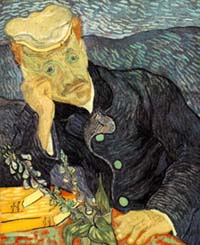|
A couple of recent,
unrelated art stories seem to interconnect.
Sixty Old Master paintings
got chopped up, and Dr. Seuss's characters got cast in
everlasting bronze.
What's wrong with this
picture?
Here come enlargements
in the round of The Cat in the Hat and The Grinch in Springfield,
Mass., and there go one-of-a-kinds by Watteau, Boucher,
Bruegel and Cranach—stolen by Frenchman Stéphane
Breitwieser. His mother did the chopping.
And get this. While reports
about the reproductions of Seuss's children's book illustrations
go into their art qualities of line, color and shape,
those about the lost paintings mentioned only their monetary
value; i.e. the value of the Cranach painting was said
to be between $7.9 million and $9 million.
Period. Fat price. Thin
story.
We've all heard how art
is good for us. In school we're taught that it cultivates
us, polishes us and makes us better people. So why is
it that whenever fine art is written about in mainstream
media nowadays, money is the main idea?
 |
|
Van
Gogh's Portrait of Dr. Gachet
|
Some years ago, when a
pair of thieves robbed a museum in Boston of masterworks
by Rembrandt, Vermeer, Manet and Degas, the loss was described
in dollars—$200 million. When Picasso's "Nude in
a Black Armchair" got attention, it wasn't for the painting,
it was for the sale
price of $45.1 million. And when news reports came out
on the sale of Van Gogh's "Portrait of Dr. Gachet" for
$82.5 million, they omitted the significance of the picture.
They didn't mention that the doctor, who slumps in seeming
despair, attended the Van Gogh in his last days before
the artist shot himself.
It's no wonder, then, that
Washington Post columnist Henry Mitchell wrote
this about the Van Gogh sale:
The gall of some painters.
They point out that Vincent van Gogh never had two
dimes to rub together and here one of his pictures
has just been sold for $82.5 million. A number of
painters sleep and eat when they feel like it. They
punch no clocks, fill out no time cards... They are
as free as anybody else to sell a picture for millions.
All they have to do is convince some idiot its worth
it.
You have to wonder whether
Mitchell would have written that if reports of the sale
included something about the painting.
It's not that prices aren't
notable. They are. They imply the art's preciousness.
But in the recent case of the shredded canvases, where
is the information about what the paintings look like,
what they mean, how they stack up with the artists‚
others, with others by others? What happened to art's
reason for being—its ability to distill, codify and
deepen our sense of the world, of ourselves?
At one time, art was thought
to be as necessary to survival as food. Cave people put
their wall paintings on the same plane with hunting for
food. They believed that if they captured an animal's
likeness, the animal was as good as dead. Art was a kind
of magic, then. Picturing herds of bison and reindeer
was like an incantation for plentiful game. Showing animals
speared was a prayer for a successful hunt. Stone Age
artists hadn't tamed horses yet. They had to run down
their food on foot in hostile wilds and with the most
primitive of weapons. They needed magic. They found it
in their art.
Now art's magic seems lost
on us. Not only have dollar amounts become the main idea,
but originality has dropped from the picture: Old Master
art gets the money talk and mock-ups of children's book
illustrations get the art talk. Lost is art's sensory
experience—the scale, the brushwork.
Lost in the story of the
destroyed Cranach painting is how hypnotic it was. You
don't get the meticulously rendered detail. You don't
get the sensuality. You don't get how his brushed-on pigment
can move you to stand back, stung, in total disbelief
at the skill. And Cranach didn't even paint for a living.
He was a licensed apothecary by trade.
But here's the kicker.
The Greeks tried without success to find a paint that
would not lose its vibrancy. They and those who followed
had to be content with whites of eggs and vinegar, which
yellowed their work. Only in the early 14th century in
Flanders did the brothers Huybrecht and Jan van Eyck invent
oil paint by substituting linseed oil for the egg whites
and vinegar. Ever since, oil painting like Cranach's has
lasted in its original glory. It took an art thief's mother
to kill it.
And all the media could
talk about is its dollar value. I could cry.
|